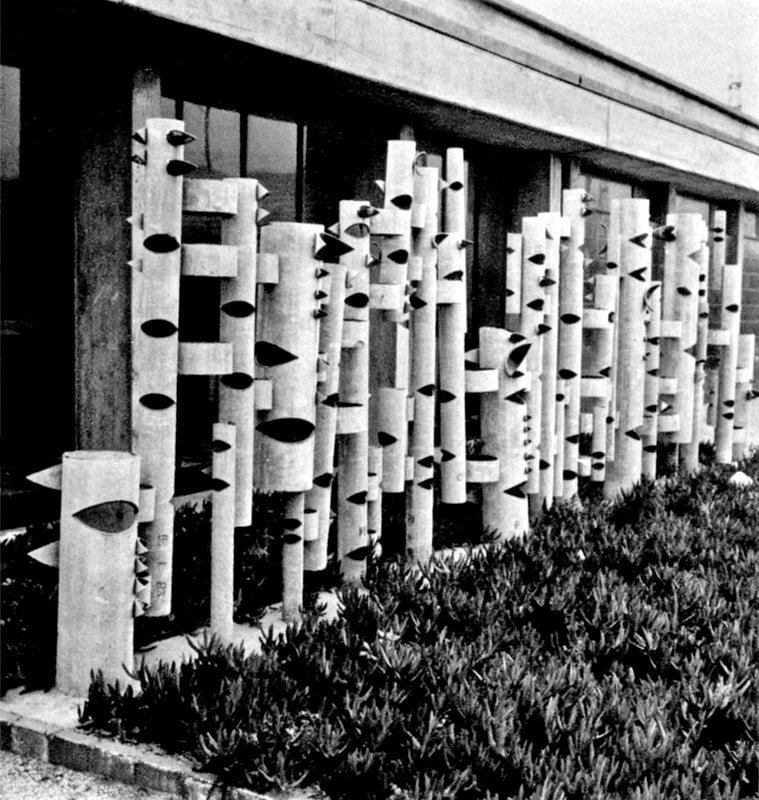In line with his approach of investigating with new materials created by industry, Villèlia began experimenting with fibre-cement pipes to develop a sculptural language from 1960. The fibre cement used by industry to manufacture pipes for channelling liquids enabled him to develop a unique world of his own, like the one he had already managed to achieve with bamboo. Evidence of this can be found in the sculptural gardens of La Ricarda in El Prat del Llobregat, the Pros garden in El Masnou, the sculptural ensemble of the Baró de Viver school in Santa Coloma de Gramanet, and the Pavillon de l’Aurore in Paris.
Also, the Siglo XX gallery in Quito (Ecuador), in collaboration with the firm Eternit, organised an exhibition of Villèlia’s fibre-cement sculptures in 1971, accompanied by a catalogue with texts by the architect Ignacio de Rivera. Furthermore, he made a foray into industrial design with this material, creating the Burenc-Ural 41 and Burenc-Ural 42 lamps. Villèlia incorporated the language of fibre-cement pipes into successive series of drawings, such as the Ligne de Sceaux series.
Also, the Siglo XX gallery in Quito (Ecuador), in collaboration with the firm Eternit, organised an exhibition of Villèlia’s fibre-cement sculptures in 1971, accompanied by a catalogue with texts by the architect Ignacio de Rivera. Furthermore, he made a foray into industrial design with this material, creating the Burenc-Ural 41 and Burenc-Ural 42 lamps. Villèlia incorporated the language of fibre-cement pipes into successive series of drawings, such as the Ligne de Sceaux series.
Pros Garden (1964)
La Ricarda garden (1965)
Baró de Viver School in Santa Coloma de Gramanet (1961) |
Pavillón de l'Aurore in París (1968) |

